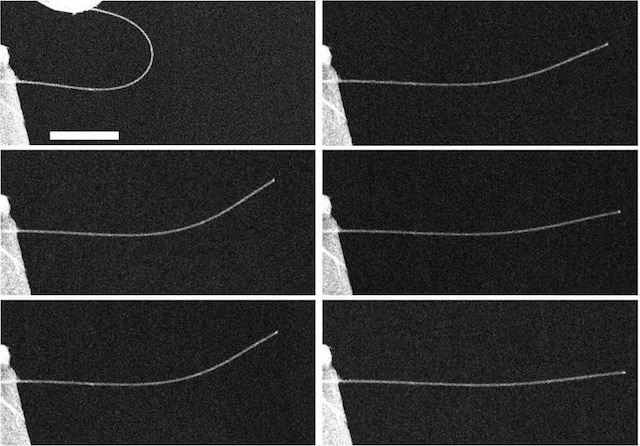This advance in understanding nanoscale anelasticity – where the wires, when bent, return slowly to their original shape – was made by researchers at North Carolina State University and Brown University.
“All materials have some degree of anelasticity, but it is usually negligible at the macroscopic scale,” said Yong Zhu, an associate professor of mechanical and aerospace engineering at NC State and corresponding author of a paper describing the work. “Because nanowires are so small, the anelasticity is significant and easily observed - although it was a total surprise when we first discovered the anelasticity in nanowires.”
According to NCSU, the anelasticity was discovered when Zhu and his students were studying the buckling behaviour of nanowires.
“Anelasticity is a fundamental mechanical property of nanowires, and we need to understand these sort of mechanical behaviours if we want to incorporate nanowires into electronics or other devices,” said Elizabeth Dickey, a professor of materials science and engineering at NC State and co-author of the paper. Nanowires hold promise for use in a variety of applications, including flexible, stretchable and wearable electronic devices.

The researchers worked with both zinc oxide and silicon nanowires, and found that – when bent – the nanowires would return more than 80 percent of the way to their original shape instantaneously, but return the rest of the way - up to 20 percent - slowly.
“In nanowires that are approximately 50 nanometres in diameter, it can take 20 or 30 minutes for them to recover that last 20 percent of their original shape,” said Guangming Cheng, a Ph.D. student in Zhu’s lab and the first author for the paper.
The work was reportedly done using tools developed in Zhu’s group that enabled the team to conduct experiments on nanowires while they were in a scanning electron microscope. Additional analysis was done using a Titan aberration-corrected scanning transmission electron microscope in NC State’s Analytical Instrumentation Facility.
When any material is bent, the bonds between atoms are stretched or compressed to accommodate the bending, but in nanoscale materials there is time for the atoms to move, or diffuse, from the compressed area to the stretched area in the material.
“This phenomenon is pronounced in nanowires. For instance, zinc oxide nanowires exhibited anelastic behaviour that is up to four orders of magnitude larger than the largest anelasticity observed in bulk materials, with a recovery time-scale in the order of minutes,” said Huajian Gao, a professor at Brown University and co-corresponding author of the paper.
Detailed modelling by Gao’s group indicates that the pronounced anelasticity in nanowires is because it is much easier for atoms to move through nanoscale materials than through bulk materials. And the atoms don’t have to travel as far. In addition, nanowires can be bent much further than thicker wires without becoming permanently deformed or breaking.
The team plans to explore whether this pronounced anelasticity is common across nanoscale materials and structures. They also want to evaluate how this characteristic may affect other properties, such as electrical conductivity and thermal transport.
The paper, “Large Anelasticity and Associated Energy Dissipation in Single-Crystalline Nanowires,” is published online in Nature Nanotechnology.




Glasgow trial explores AR cues for autonomous road safety
They've ploughed into a few vulnerable road users in the past. Making that less likely will make it spectacularly easy to stop the traffic for...